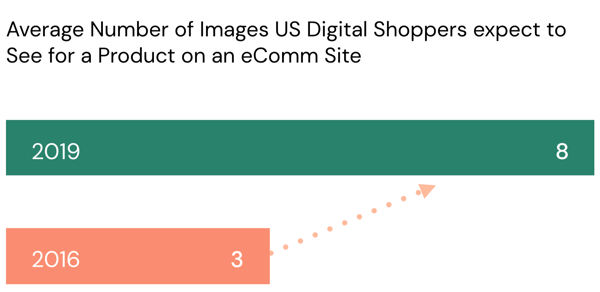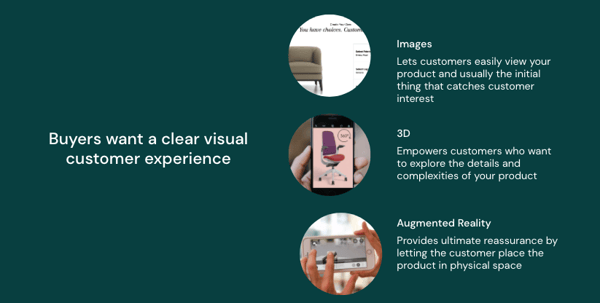Buyer Fact #2
Brands with a customizable or configurable product are facing competition as market leaders offer interactive product experiences.
Over the last 20 years, online customization has moved “gradually” – starting with NikeID – but is now “suddenly” in the area of requirement. Let's see how that happened
Arriving in 1999, NikeID was the first widely adopted and loved configurator. The online experience was groundbreaking.
The instant this first-of-its-kind technology was rolled out to the masses, it was a hit and provided a historic brand lift for Nike as millions customized the flashy Nike shoes in real-time. Just as importantly, NikeID was good for business – the experience jumpstarted Nike’s “direct-to-consumer” experience which meant cutting out the retailer middleman, improving margins, and tightening relationships with the customer.
Since that early customization experience, Nike has accelerated pace. In Q2 this year Nike’s “direct-to-consumer” sales were up 32% and digital sales were up 84% year over year. NikeID proved that if people can create their own product customization in real-time, they’ll buy it. And others are experiencing the same.
BJ McCahill, Vice President at Kashiyama, a custom suit maker and Threekit customer, had this to say:
“We now have full control over the product. With Threekit’s Virtual Photographer and 3D Configurator, our measurement aspects, accuracy, and high-end fabric offerings are not only showed with amazing detail online, but the technology is helping us scale our operations in a way that wasn’t possible before.”
In 2021, buyers have made what they want crystal-clear, and it's customization. Companies like Nike and Kashiyama are reaping the benefits from their early move.
If you sell a customizable product, it’s critical that you give the customer a chance to customize that product. In 2021, online customization has moved from nice-to-have to a can’t-do-without.
Buyer Fact #3
A better visual experience with 3D product configuration reduces buyer stress. And, it's more fun.
Sometimes, the human element can’t be overlooked. All people have emotions, desires, and needs that can’t always be measured by stats and expert quotes. But often, these notions are more important than anything else.
An important human element of buying is that it can be stressful:
- The frustration of a product showing up at your door and not being exactly what you thought it would be
- The wasted time and money behind product returns
- The miscommunication and delay of talking to customer support to validate whether this material actually can work with that product
3D enables buyers to configure the exact product they want and see it from every conceivable angle right in the browser, and–with AR–right in their living space. This interaction builds confidence and reduces the effort and stress of “not knowing” for buyers. This effect is magnified with "big purchases" like architectural features, illustrated in Sapphire Balconies' custom balcony configurator below.
3D isn’t just about loss aversion. It’s also about creating a sense of excitement and novelty. It’s about making shopping and buying fun again. Lindsey Scoggins Studio lets shoppers customize rings real-time while exploring every element including metals, settings, gem stones and more in a fun and engaging way.
The future isn’t always just about data – 3D provides buyers with an opportunity to go deeper to gain confidence and reduce stress more than traditional photography ever could. And these new, engaging, fun experiences matter more than ever.
PART 2: BUSINESS
Business Fact #1
3D product configuration allows businesses to scale way beyond the limits of traditional photography.
In 1930, photography started to be used commercially for products. It quickly grew into the primary way products were depicted visually for marketing and advertising, and it maintains that status today. Over the years, there have been innovations to speed up the photography process, but overall it remains a time-intensive and costly one. The majority of brands today are held captive by a technology that’s more than 90 years old.
The frustratingly slow speed and high cost of photography has only been magnified by the rise of customization. The average cost of a finished product image in 2020 was $25. If you have 10 products with just three simple customizations each and you want the recommended eight photos of each configuration, you now need 240 photos which will cost $6,000, before accounting for other costs like shipping, time spent, etc.
For brands with a product that’s configurable or customizable, or that has any set of rules really, product photography severely diminishes the overall returns of offering customization in the first place.
But with a high-end 3D platform like Threekit, brands can escape this trap. For example, with Threekit’s help, Crate & Barrel created over three million images of every potential configuration of a couch in less than a month, for a small fraction of the cost of traditional photography.


.gif?width=318&name=chrome-capture%20(26).gif)